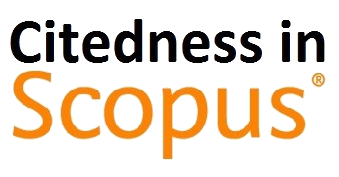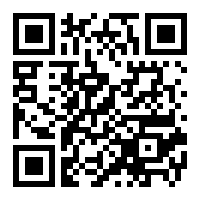The application of the Analytic Hierarchy Process method to the selection of dominant factors for adolescents who are prone to insecurity
(1) Universitas Bina Sarana Informatika, Indonesia
(2) Universitas Graha Nusantara, Padangsidimpuan, Sumatera Utara
(*) Corresponding Author
Abstract
Full Text:
PDFReferences
R. A. Purnama and S. Wahyuni, “Kelekatan (Attachment) pada Ibu dan Ayah Dengan Kompetensi Sosial pada Remaja,” J. Psikol., vol. 13, no. 2010, 2017.
S. Fitri and A. Masturah, “Pengaruh Layanan Konseling Kelompok Dengan Teknik Problem Solving Untuk Mengatasi Konflik Antara Remaja Yang Memiliki Insecure Attachment Dengan Orang Tua,” J. Bimbing. dan Konseling, vol. 8, no. 1, pp. 102–112, 2019.
U. Mu’awwanah, “PERILAKU INSECURE PADA ANAK USIA DINI,” J. Pendidik. Anak Usia Dini, vol. 2, no. 1, pp. 47–58, 2017.
M. S. Rais, “Sistem Pendukung Keputusan Untuk Pemilihan Lokasi Perumahan Menggunakan Analytical Hierarchy Process (AHP),” J. OfComputer Sci., vol. 2, no. 2, pp. 59–72, 2016.
S. Rakasiwi, “Sistem Pendukung Keputusan Dalam Menentukan Penilaian Kinerja Guru Dengan Metode Analytical Hierarchy Process (AHP),” J. SIMETRIS, vol. 9, no. 2, pp. 1001–1008, 2018.
R. A. Suherdi, R. Taufiq, and A. A. Permana, “Penerapan metode ahp dalam sistem pendukung keputusan kenaikan pangkat pegawai di badan kepegawaian dan pengembagan sumber daya manusia kota tangerang,” Pros. SINTAK, pp. 522–528, 2018.
H. R. Agustapraja and S. A. Rosidah, “Faktor penentuan lokasi perumahan dengan metode ahp di kabupaten lamongan,” J. Tek. Sipil Univ. Teuku Umar, vol. 6, no. 1, pp. 76–86, 2020.
D. R. Sari, A. P. Windarto, D. Hartama, and Solikhun, “Sistem Pendukung Keputusan untuk Rekomendasi Kelulusan Sidang Skripsi Menggunakan Metode AHP-TOPSIS,” J. Teknol. dan Sist. Komput., vol. 6, no. November 2017, pp. 1–6, 2018, doi: 10.14710/jtsiskom.6.1.2018.1-6.
A. A. Chamid and A. C. Murti, “Kombinasi Metode Ahp Dan Topsis Pada Sistem Pendukung Keputusan,” Pros. SNATIF, pp. 115–119, 2017.
D. Wira, T. Putra, and M. Epriyano, “Sistem Pendukung Keputusan Pemilihan Sepeda Motor Jenis Sport 150cc Berbasis Web Menggunakan Metode Analytical Hierarcy Process (AHP),” J. TEKNOIF, vol. 5, no. 2, pp. 16–24, 2017, doi: 10.21063/JTIF.2017.V5.2.16-24.
G. P. Sanyoto, R. I. Handayani, and E. Widanengsih, “Sistem Pendukung Keputusan Pemilihan Laptop Untuk Kebutuhan Operasional Dengan Metode Ahp (Studi Kasus: Direktorat Pembinaan Kursus Dan Pelatihan Kemdikbud),” J. Pilar Nusa Mandiri, vol. 13, no. 2, pp. 167–174, 2017.
I. Mawaddah, “Sistem Pendukung Keputusan Faktor-Faktor Penyebab Keterlambatan Audit Pada Perusahaan Menerapkan Metode AHP (Studi Kasus: Kantor Akuntan Publik),” TIN Terap. Inform. Nusant., vol. 1, no. 2, pp. 91–98, 2020.
DOI: https://doi.org/10.30645/ijistech.v4i2.107
Refbacks
- There are currently no refbacks.
Jumlah Kunjungan:
Published Papers Indexed/Abstracted By:












